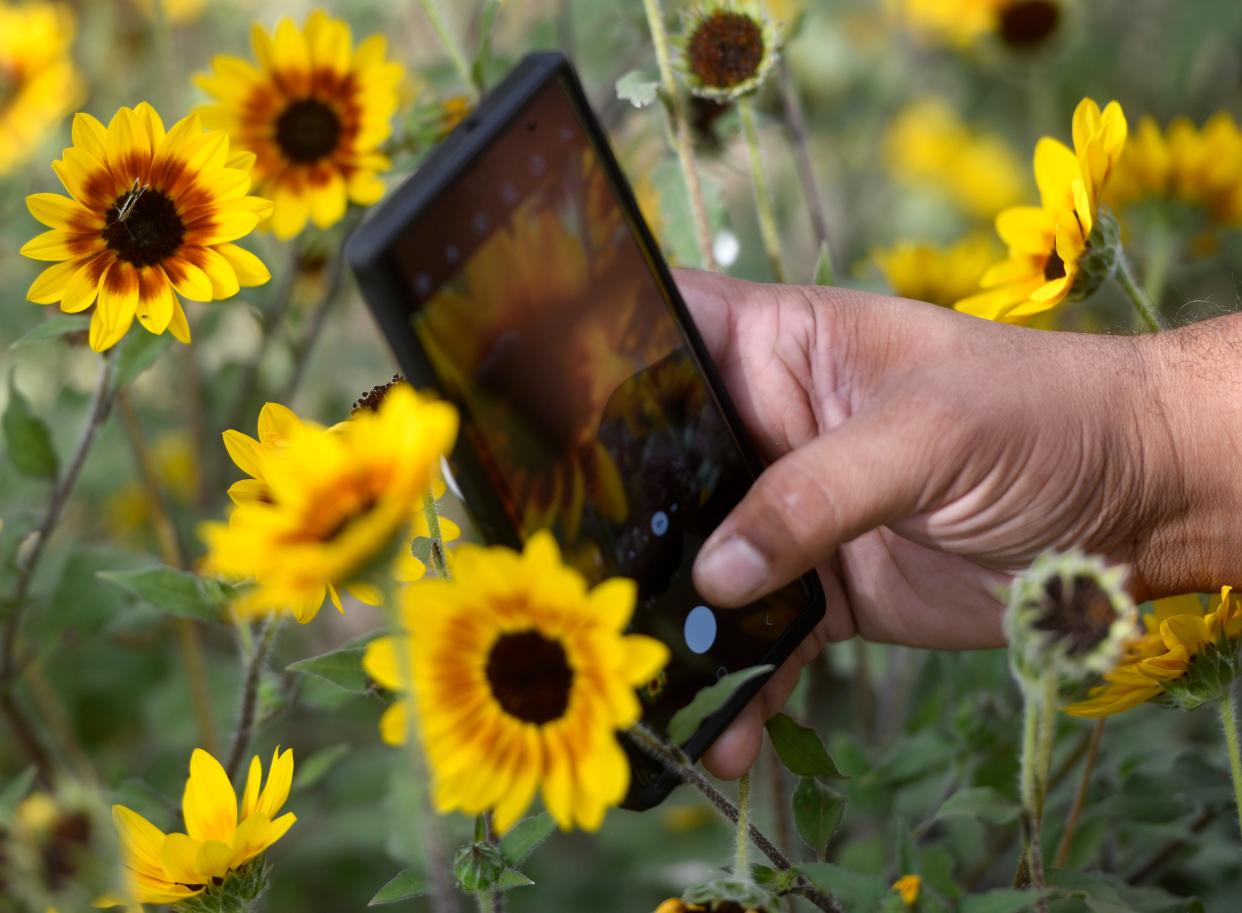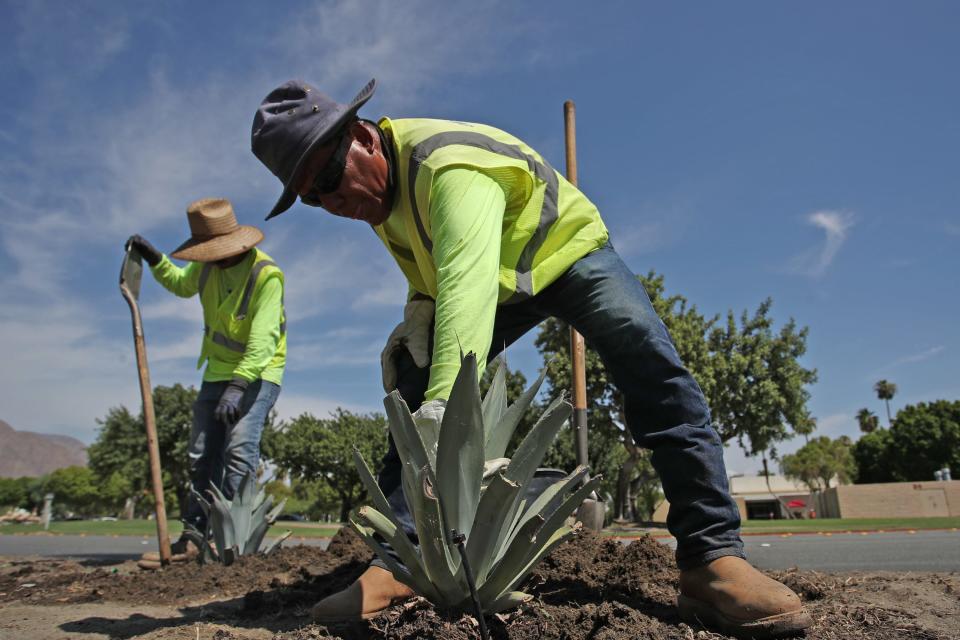Embracing a water-wise approach to gardening in West Texas

The warm weather of spring and summer seems to be here to stay.
The sounds of birds chirping fill the air. Hummingbirds quickly flutter in and out of each flower while the buzzing of bees remains constant as they float from one plant to the next. Bright blooms of every hue fill local landscapes as nearby grasses get greener - well, if they're lucky enough to get some of the rare rain we've seen so far this year.
With the arrival of warm weather, gardeners across the region of preparing for a successful growing season ahead. With each new seed planted in the soil and every drop of water, they begin to further cultivate a thriving ecosystem that benefits all who consider a home: ladybugs, bees, butterflies, birds, squirrels and anything else that may find its way into the closest backyard.
But concerns of water scarcity loom large over West Texans, and the truth behind this scenario gets smaller and smaller each year. Yet even with the complications we face today, as droughts become more persistent and the Ogallala Aquifer continues dropping, the task of gardening doesn't have to be in jeopardy.
With careful planning — choosing the right plants and the right tools — it's still possible to create a garden that supports our native species and conserves water.
We asked Vikram Baliga, the manager of Texas Tech Horticulture and Greenhouse, the best way to approach this. Baliga is also a lecturer in horticulture at Texas Tech and leads two podcasts, including Texas Tech University Public Media's "In the Grow" with journalist Rachel Boyd, and Planthropology, of which he is the founder.

Here's what he shared.
What does xeriscaping mean to you?
"I think if you say xeriscape, most people get an image in their head of rocks and cactuses — maybe some Texas sage or whatever. Things like that are fine; they're not inherently bad. But we can also have lush landscapes that look like cottage gardens or formal styles — we just need to pick plant materials carefully."

When you say this, do you mean native plants or something else?
"For me, when we talk about native plants, it's a loaded term, because of the way it's framed. Like, how far back do we want to go? The common definition of a native plant is whatever was here when Europeans showed up. But that assumes that the people who were here for maybe 30,000 years had no impact on landscape, and of course they did. They managed the land; they just used different tools. So, for me when I talked about native plants, I like to think about like well-adapted plants — what works well in our environment..
"I tend to think, what is well adapted? Or what can we grow here that is going to take our weird water and soil and 15 hours of sunlight in the summer and extremely hot weather. But also not become invasive or cause ecological harm."
"We actually have a wide variety: lantanas, Mexican hat, gaillardia, sunflowers. There are all kinds of things: native orchids, tons of grasses, tons of flowers. We have things like yarrows — that have native species and then non-native species — and it turns out, they all do fine. They're all good choices."
What do you consider drought-tolerant plants?
"With a lot of our drought-tolerant species, when water is available, they'll use as much as they can. But then they can go a long time without needing to be watered again. So it's not that they don't need water. It's not that they don't use a lot of water. It's just that they don't need it as often."
So, is it the native species that impact our pollinators most?
"You definitely get these long-term evolutionary relationships between pollinators and pollinator plants. Birds, reptiles, rodents typically get healthier native populations of animals with healthy native populations of plants. But that's not to say that introduced species, or non-invasive non-natives can't beneficial for our native pollinators. Some are more generalists than others and can eat whatever. Native may be a little bit better, but we can find substitutes that will still support our native populations."
"But we also have a lot of species here that are not native, so that's actually, for me, another reason to mix introduced species — some exotic species and some native plants. For instance, the honeybees are not native, and sometimes they force out our native bees because they're bigger, more aggressive and faster, and they'll go feed on the same plants. So, if those (native) feeding sites are already covered with honeybees, sometimes we don't have the forage resources for those that are native. So if we bring in plants that aren't native here, but are a really good food source for honeybees, a lot of times they won't visit the native plants as much, which means our native pollinators will feed on them."
As we face drought, more people are hesitant to plant because they don't want to waste water. Do you think that's ecologically viable?
"In the past 10-15 years, especially in some of naturalist and environmental circles, people are conflating watering the landscape with wasting water. But you're not wasting water. It's not like you're just letting it run out into the street; you're using it for a purpose.
"There are hundreds of benefits to having a garden: You're providing resources for pollinators. You're keeping the ground cooler. You're reducing erosion. You're making your quality of life better. It also builds better communities and makes people healthier. It raises the value of properties and makes communities look better. We reduce our heat island effects in an urban environment. It's just about doing it as efficiently as you can."
What do you consider the most efficient in gardening?
"Pick the right plants. Put them in the right spots. Use better irrigation technologies — drip line is 95% effective while sprayer heads are about 40% effective. And use mulch. The most sustainable type of mulch is probably a pine bark, because it comes from sawmills. So, where they're already making lumber for construction, they take the bark, they take the other parts of the plant shredded in the mulch and use as a secondary product. So it's being produced anyway."
This article originally appeared on Lubbock Avalanche-Journal: Embracing a water-wise approach to gardening in West Texas

